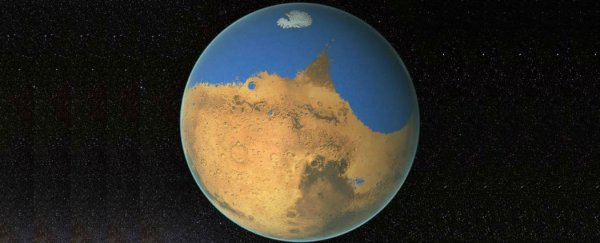"I think we're going to have strong indications of life beyond Earth within a decade, and I think we're going to have definitive evidence within 20 to 30 years," NASA chief scientist, Ellen Stofan, told the public during an event in the US at the NASA headquarters in Washington, DC earlier this week. "We know where to look. We know how to look. In most cases we have the technology, and we're on a path to implementing it. And so I think we're definitely on the road."
The hour-long event, which you can watch in the video below, had five of the space agency's top scientists running through their latest big discoveries, most of which featured the presence of water - liquid, icy, underground, or ancient - on cosmic bodies like Mars, Europa, and Enceladus.
Each time we discover evidence of water on a planet or a planet's moon, we're one step closer to finding signs of life, and the frequency at which we're now finding water all over the Solar System is what's giving these scientists such confidence.
"It's definitely not an if, it's a when," said Jeffery Newmark, NASA's interim director of heliophysics.
Last year was a big year for getting to know our Solar System better, with data from the Curiosity rover suggesting that Mars's Gale Crater once held a lake that existed for millions of years - potentially long enough for life to have formed - and the more recent discovery of nitrates on the Red Planet's surface, which also points to the possibility of life existing there at some point.
In fact, the evidence suggests that Mars once held more water than the Arctic ocean, NASA scientists said last month, so if life was going to form somewhere other than Earth, Mars is looking like a pretty good candidate.
Another great candidate for where to find traces of alien life over the next few decades is Jupiter's water-laden moon, Europa, and guess what? We're headed there too.
"Farther afield, observations by NASA's Kepler space telescope suggest that nearly every star in the sky hosts planets - and many of these worlds may be habitable," says Mike Wall at Space.com. "Indeed, Kepler's work has shown that rocky worlds like Earth and Mars are probably more common throughout the galaxy than gas giants such as Saturn and Jupiter."
In 2020, NASA plans to launch its next Mars rover, which is being specifically designed to search for signs of ancient life. In the decade following, it hopes to land astronauts on the now-barren planet, to further the hunt.
"The science community is making enormous progress," said Jim Green, who is the director of planetary science at NASA. "And I've told my team I'm planning to be the director of planetary science when we discover life in the Solar System."
Bold statement, Jim! Better get crackin'!
Watch the panel discussion in full below:
Source: Space.com
